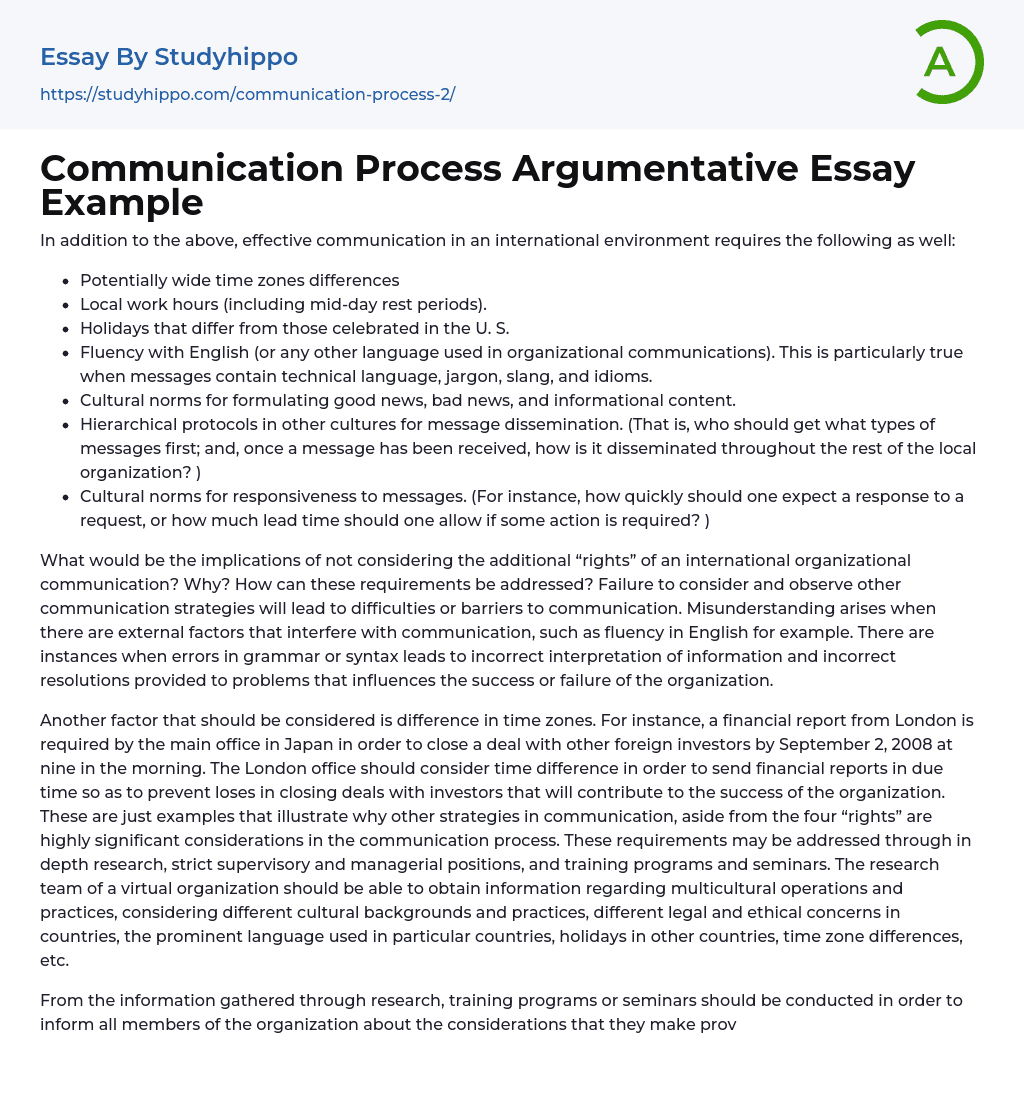The text highlights the significance of considering specific factors to ensure effective communication in an international setting. These factors encompass potential time differences across regions, adherence to local work hours and rest periods, recognition of non-U.S. holidays, proficiency in English or other languages utilized in organizational communications, understanding cultural norms for various content types, acknowledging hierarchical protocols for message dissemination within different cultures, and being aware of cultural norms regarding message responsiveness. Disregarding these factors can result in difficulties and obstacles in communication. Failing to consider these factors may lead to misunderstandings arising from external elements such as language fluency. To address these requirements, individuals should be mindful of cultural and linguistic differences and adapt their communication strategies accordingly.
Mistakes in grammar or syntax can have detrimental effects on organizations, res
...ulting in misunderstandings and incorrect solutions. It is also important to consider the time difference between different locations. For instance, if the main office in Japan requires a financial report from London by September 2, 2008, at nine in the morning to finalize a deal with foreign investors, it is crucial for the London office to be aware of this time difference. This awareness ensures timely delivery of reports and helps prevent potential losses in deal closures. These examples highlight the importance of communication strategies that go beyond the four "rights". Extensive research, effective supervision and management, along with training programs and seminars are necessary to meet these requirements.
The research team of a virtual organization should gather information about multicultural operations and practices. This includes considering different cultural backgrounds and practices, legal and ethical concerns in different countries, the prominent language used in specific countries, holiday
in other countries, and time zone differences. The information gathered should be used to conduct training programs or seminars for all members of the organization. These programs will inform members about the considerations they need to make due to differences in time zone, language, non-working holidays, etc. Once all members have received the information, supervisors and managers should strictly enforce rules based on the research on international operations and practices. This ensures that all members of the organization will use appropriate communication strategies to efficiently and effectively transfer information to other organizations.
References
- Ahuha, M. K. & Carley, K. M. (1998). "Network Structure in Virtual Organizations." Retrieved September 1, 2008, from JCMC. Website: http://jcmc.indiana.edu/vol3/issue4/ahuja.html#Virtual
- Greeting essays
- Orality essays
- Intercultural Communication essays
- Interpersonal Communication essays
- Cross-Cultural Communication essays
- Nonverbal Communication essays
- Effective Communication essays
- Communication Skills essays
- National News essays
- The view essays
- Arranged Marriage essays
- Communication essays
- Conflict Management essays
- Conflict Resolution essays
- Connection essays
- Conversation essays
- Dating essays
- Friendship essays
- Mediation essays
- Collaboration essays
- Dialogue essays
- Fake News essays
- Journalism essays
- Mass Media essays
- Media Analysis essays
- Media Bias essays
- Media Studies essays
- Message essays
- News essays
- Propaganda essays
- Radio essays
- Rogerian Argument essays
- Role of Media essays
- Social Media essays
- Social Media Marketing essays
- Social Networking essays
- Youtube essays
- Coaching essays
- Critical Thinking essays
- homework essays
- Learning essays
- Library essays
- Listening essays
- Literacy essays
- Mentor essays
- Physical Education essays
- Project essays
- Reading essays
- Research essays
- Sex Education essays




